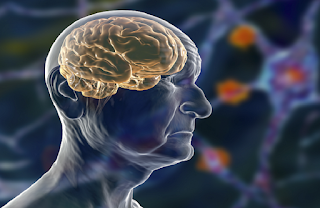Scientists have developed smart nanoparticles capable of crossing the blood-brain barrier, carrying anti-inflammatory drugs, potentially opening the door to new treatments for intractable neurological diseases.
These tiny nanoparticles, measuring just 100 nanometers (a thousand times smaller than the width of a human hair), were engineered by the Oregon State University team to carry anti-inflammatory drugs and deliver them precisely to the hypothalamus, a vital area of the brain responsible for regulating appetite and metabolism.
What makes this technology unique is its use of special peptides that act as "smart keys" that enable particles to cross the difficult blood-brain barrier and then specifically target microglia cells that cause inflammation.
In laboratory experiments conducted on mice with cancer-associated wasting syndrome (Cachexia), the results showed striking improvements. The treated mice showed a significant reduction in markers of neuroinflammation, a 94% increase in food consumption, and significantly better maintenance of body mass and muscle mass compared to untreated mice.
This scientific achievement is of particular importance to millions of patients worldwide, as cancer wasting syndrome is a serious complication affecting up to 80% of advanced cancer patients. It leads to severe weight and muscle loss despite adequate nutrition, contributing to the death of 30% of those affected. Current treatments fail to address the root cause of the problem because they cannot reach the hypothalamus region of the brain.
But the application of this technology goes beyond wasting syndrome. It could pave the way for treating a wide range of neurological diseases associated with inflammation, such as Alzheimer's, Parkinson's, and multiple sclerosis, which have long struggled to deliver effective drugs to the brain.
"We have achieved a double breakthrough: first, by crossing the blood-brain barrier, and second, by precisely targeting glial cells causing inflammation within a specific area of the brain," said Professor Oleh Taratola, head of the research team. "This technique opens up entirely new horizons in the treatment of neurological diseases."
Researchers hope that this technology will be developed into a treatment available to humans in the next few years, potentially revolutionizing the field of neurology and the treatment of intractable diseases that have long baffled doctors and scientists.
These promising results were published in the latest issue of Advanced Healthcare Materials.
Tags:
artificial intelligence
boost brain power
brain
neurodegenerative diseases
neurology
smart phones
technology




